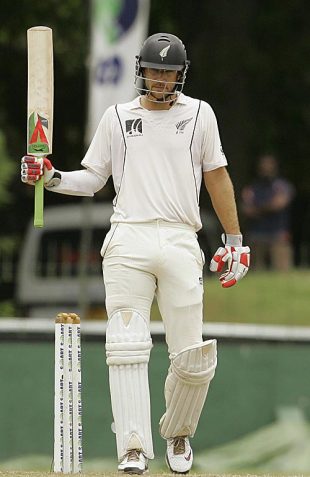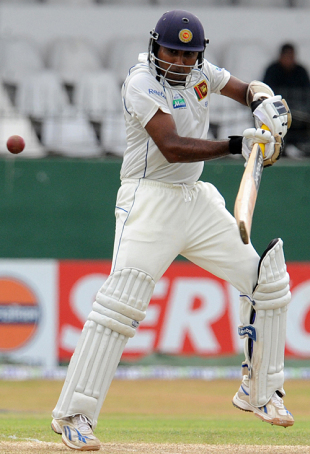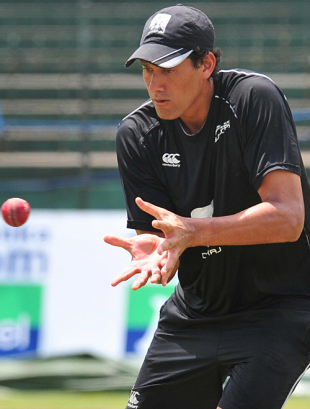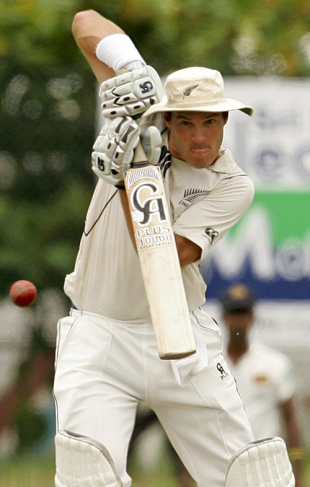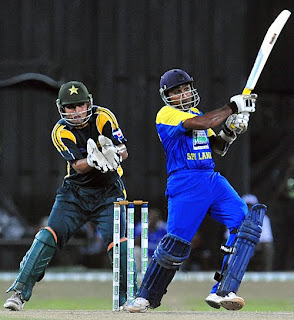Australia 230 for 4 (White 105, Clarke 52) beat England 228 for 9 (Strauss 63, Watson 3-36) by six wickets
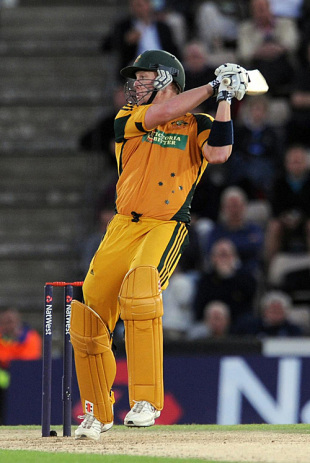
| |
Cameron White scored his maiden international hundred, and Michael Clarke signed off as captain with a sheet-anchor 52 from 92 balls, as England's under-performing batsmen were taught an object lesson in how to pace a run-chase in the third ODI at the Rose Bowl. Chasing 229 under the floodlights after losing the toss for the third time in the series, White and Clarke added 143 for the third wicket to steer Australia to a comfortable six-wicket victory with nine balls remaining, and secure a virtually unassailable 3-0 lead with four matches of the NatWest Series still to come.
Though England's bowlers put up something of a fight with the ball, the match was lost during another inadequate performance from the batsmen, in which Andrew Strauss, once again, was the only redeeming feature. Australia lost both openers early in their chase, and at 56 for 2 after 15 overs, it looked as though they might be forced to struggle for the ascendancy. But whereas England's batsmen produced five partnerships worth between 34 and 41 runs - a stat that perfectly encapsulated the wastefulness of their performance - the Aussies needed just one hefty alliance to make the game safe.
For differing reasons, White and Clarke had plenty to prove in tonight's contest - the return of Ricky Ponting for Saturday's fourth ODI will require White to relinquish his No. 3 spot, and Clarke to hand back the captaincy. But both men ensured that the skipper will return to a steady ship after silencing a full house at The Rose Bowl with a performance that was light on fireworks but brimful of determination. Clarke contributed a solitary boundary to a stay that spanned 30 overs, which also happened to be his last shot before being bowled by Graeme Swann one ball later, and while questions remain about his lack of impetus in the middle-order, tonight is not the night for quibbling.
Instead, it is a night for White to celebrate his arrival on the international stage. Having never batted higher than No. 5 before this series, today's 116-ball hundred followed on from his maiden half-century in the first match at The Oval, and whereas England's skittish batsmen have continually found new and innovative ways to squander their promising starts, he belied his reputation as a biffer to set himself a platform and, then, crucially, to build on it.
His only error with the bat came on 92, during Australia's Powerplay, when Tim Bresnan fluffed a skier at long-on - and while the bowler, James Anderson, was not best pleased at that let-off, Anderson himself had earlier been guilty of letting White off the hook with two run-out chances - the first an underarm shy from five yards that somehow missed the stumps with the batsman on 46, and later a failure to break the stumps with White on 70, and floundering for the crease having worked a single into the leg-side.
There was no panic at any stage of Australia's performance, however. They claimed the Powerplay at 154 for 2, with 66 balls of the chase remaining and 75 runs still needed, whereupon White drilled Sidebottom over mid-on for their first six of the series. His own contribution ended with nine runs still required, when he scudded a Luke Wright slower ball to mid-off, but Callum Ferguson and Michael Hussey ensured there were no late dramas.
And so England were left to rue another day in keeping with their performances all year, in which their fortunes were dictated entirely by their captain. Having won his third toss of the series under overcast skies, Strauss might well have been tempted to bowl first, were it not for the memory of the failed run-chases that England compiled in the first two matches at The Oval and Lord's. This time, he took it upon himself to set the agenda personally, and at first he did so to fine effect. Though he did not open his account until his 11th delivery of the innings, he then climbed into Brett Lee with three fours in a row - a pull, a cut and a drive, the three staples of his international diet - en route to a 60-ball half-century.
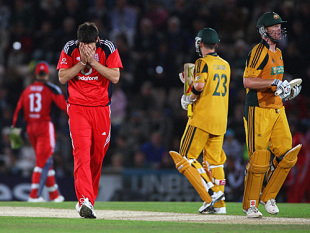
| ||
| | ||
At the other end, Ravi Bopara showed signs of his returning confidence when he drilled the first ball of Nathan Bracken's third over over long-on for six, and at 40 for 0 after seven overs, England were looking in command of their destiny. But then, however, it all started to go wrong. Bopara attempted a repeat stroke, but picked out James Hopes at full stretch running back towards the pavilion, and in the very next over, Matt Prior sized up a violent pull shot to get himself off the mark, but he fizzed a simple chance straight to Hopes once more, this time off the bowling of Mitchell Johnson.
Owais Shah, under pressure again thanks to his haphazard running in the second ODI, was adjudged lbw, somewhat unluckily, as replays suggested that Johnson's delivery would have slipped past the off stump. And then, in a lapse in concentration that has been an unfortunate part of his otherwise excellent form in this series, Strauss worked Hauritz in the air with a flick of the wrists, and Clarke swooped low at midwicket to send him on his way. At 98 for 4, Australia were firmly in the ascendancy.
Collingwood, charged with raising the tempo as well as providing mature support to the tyro Eoin Morgan, then produced arguably the most culpable dismissal of the lot, as he attempted to biff Shane Watson's medium pace over the leg-side field, but succeeding only in scuffing his drive to Bracken at mid-on for 28 boundary-free runs. And when Luke Wright scorched to short extra cover, it was left to Morgan to cobble together a defendable target. He added 36 in seven overs with Bresnan, including a rare six as Hopes was punched over the top, but the decision to call for the Powerplay in the 42nd over once again scuppered all England's momentum.
On 43, Morgan was suckered by a slower-ball full toss from Lee, and patted a tame drive to Johnson at wide mid-off, before Swann played across the line to a wicket-to-wicket delivery from Shane Watson to be adjudged lbw for 3 from three balls (188 for 8). As England dribbled through their allocation, it wasn't until Bresnan cleared his front leg to smash consecutive fours off Watson with three balls of the Powerplay remaining that they managed so much as a boundary in their five sloggable overs.
Bresnan and Ryan Sidebottom ensured that the innings was not a total surrender by hauling England through their 50 overs in a ninth-wicket stand of 40, with both men posting their highest scores in ODI cricket before Sidebottom holed out to White off Watson's final ball of the innings. Nevertheless, their modest achievements were a further indictment of the failings higher up the order. Only an inspired performance with the ball would have enabled England to escape. And sure enough, White and Clarke ensured it did not materialise.
